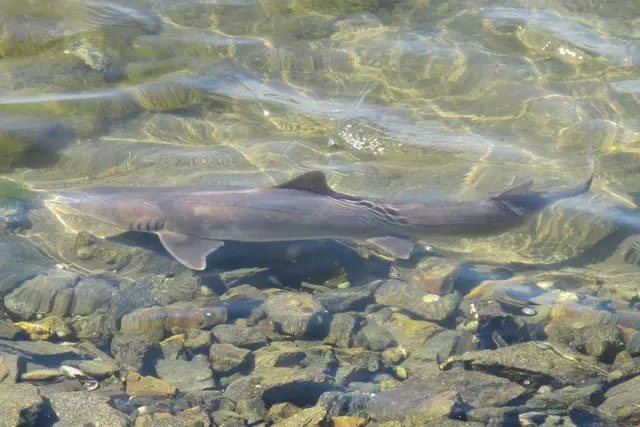Despite many stretches of the river being declared “biologically dead” since 1957, the Thames River is now revitalized and home to three species of sharks.
This information is highlighted in the latest report on the state of the Thames River conducted by the Zoological Society of London (ZSL), which discusses the changes and conservation efforts regarding the river from the 1950s to the present.

Sharks are believed to use river mouths for breeding and raising pups.
In addition to sharks, other species such as seahorses, eels, and seals are also thriving in the Thames River, thanks to conservation campaigns and improved water quality after the river was once declared “biologically dead” in 1957.
According to expert Alison Debney from ZSL, the Thames is now home to over 115 species of fish and 92 species of birds. Along its 345 km length, there are nearly 600 hectares of marshland—a vital habitat for many animal species.
Sharks are believed to utilize river mouths for breeding and raising pups, thanks to improved water quality and adequate oxygen levels. “The river mouths provide us with clean water, protect against flooding, and are an important nursery for wildlife. This report has allowed us to truly consider how far the Thames has come in its recovery journey,” said Ms. Debney.
However, rising temperatures and water levels pose an increasing threat to river ecosystems. Water levels at Silvertown, in East London, have risen by 4.26mm per year since 1990. Meanwhile, the temperature of the Thames River has increased by an average of 0.2% per year.
Nitrate emissions are also creating new risks. Industrial waste and sewage are the primary causes of this situation. Pollution may be mitigated by the Thames Tideway Tunnel, a £4 billion project—referred to as London’s “super sewer”—set to be completed in 2025. This tunnel will collect over 95% of the overflow sewage entering the river from the Victorian-era sewer system.


















































